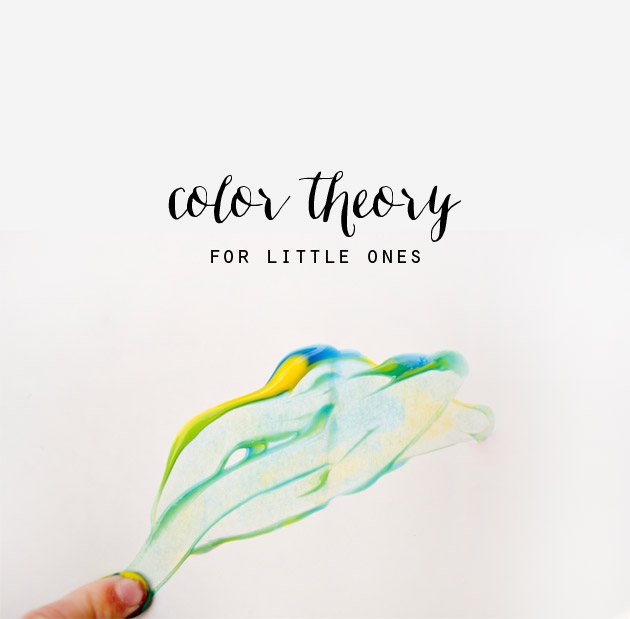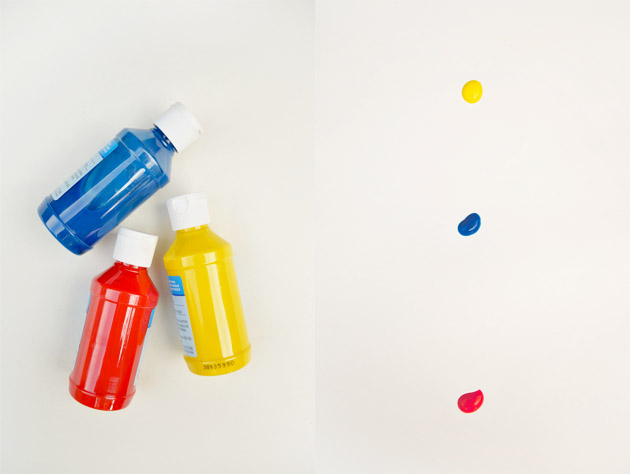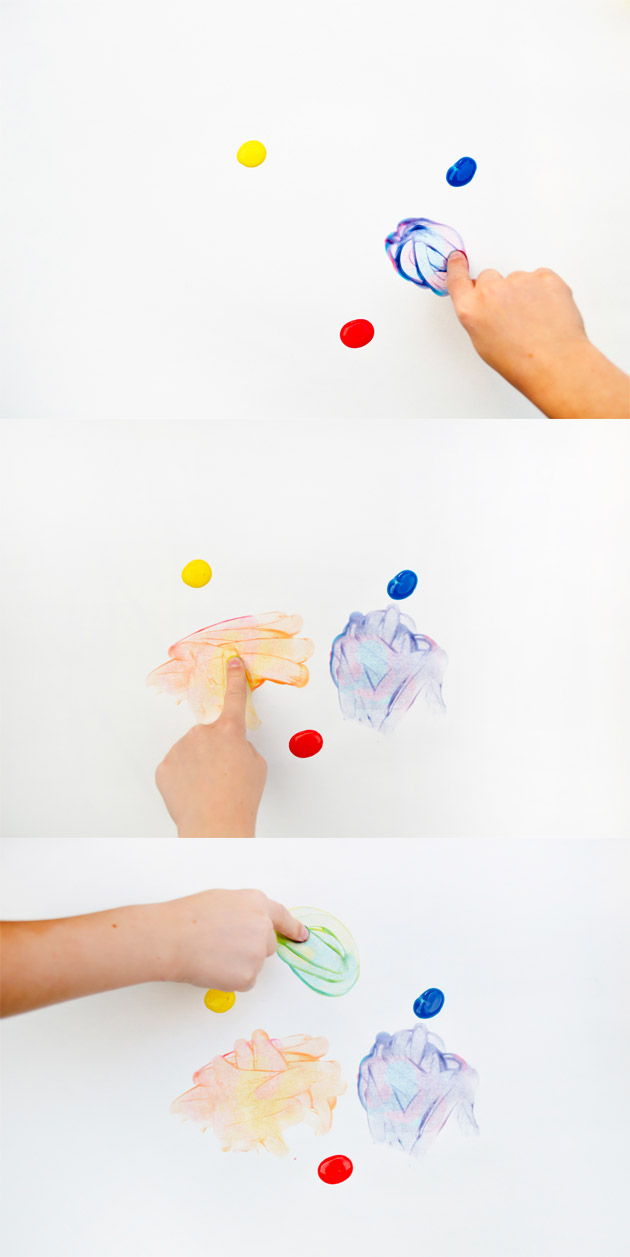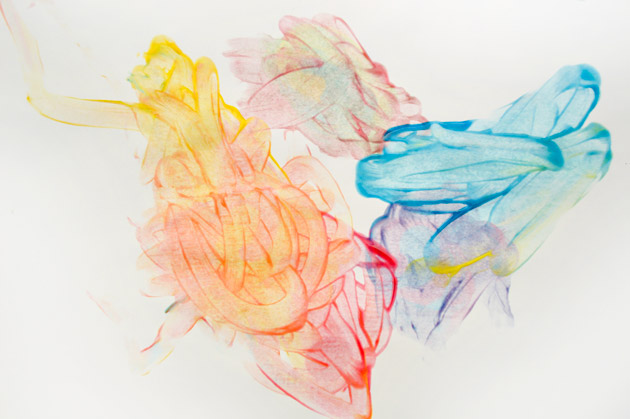Color Theory for Little Ones

Randi from Swoon is with us today to share some fun tips for exploring color with children. Don’t forget to watch the video with your aspiring artists for a does of inspiration…
Whether we recognize it or not, color plays an important part in each of our lives. It can excite us, inspire us, or remind us of something important. Understanding how color works is both fun and useful. My girls and I have talked about color theory and mixing before, mostly in the midst of afternoon painting sessions, but recently we decided to get messy and play around with it a bit. We started with a nice sized piece of butcher paper and three bottles of finger paints: red, blue, and yellow.

The Basics:
Most adults know and take for granted the fact that all colors stem from the three primary colors-red, blue, and yellow. This fact alone is fascinating for children, especially when they can see the colors being “made” right in front of them! Mixing the primary colors to make the secondary colors of violet, green, and orange is a great activity and starting point, especially for young children. I placed a portion of each primary color in a triangle shape to start with, and then my daughter used her fingers to carefully mix each color with the one next to it to make up the secondary colors: red+blue=violet, red+yellow=orange, yellow+blue=green.

This transformation was not a surprise to my daughter, as she already knew these simple concepts, but she was delighted to make the process happen herself using her hands. We recreated this scenario many times before moving on! In fact, we made a fun little video…
Color Theory for Little Ones from Randi Edwards on Vimeo.

If you have older children, or a young child with an excellent attention span, here are a few more things to explore:
Advanced Concepts:
- Tertiary Colors: Mix each primary color with the secondary color next to it to create the tertiary colors, which are: blue-green, yellow-green, yellow-orange, red-orange, red-violet, and blue-violet. Talk about the differences in these colors.
- Make a Color Wheel with all 12 of the colors you’ve created. Talk about which colors seem warm, and which seem cool (see an example here).
- Complementary Colors: Two colors directly across the wheel from one another are said to be complementary colors. Because of their opposite natures, they have a striking appearance when placed near one another. Spend time playing with these colors next to each other. Mix them together to create gray/black.
- Shading and Tinting: Mix white with a color to create a lighter tint (for example: make pink out of red), or add black to make a darker shade. You can also add a small amount of the colors complement to darken the shade.
- Color Harmony: Experiment with placing and playing with different color combinations. Which ones seem to work well together? Which combinations are your favorites? What do different colors and color combinations mean to you or remind you of? How do they make you feel?
*A note about materials: My daughter and I used finger paint, which was a lot of fun, but does not carry a lot of pigment. To make a bigger impact, or to explore some of the more advanced concepts, you may want to switch to acrylic paint as it is more pigmented and heavy bodied. You can still use your hands!
A few of our favorite books about color:
2. The Game of Red, Yellow, and Blue by Herve Tullet
3. The Day the Crayons Quit by Drew Daywalt
